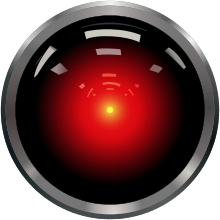The Apple Vision Pro will change everything for Process Automation
On June 5, 2023, Apple introduced the Vision Pro spatial computing headset.
Compared with the competition (Meta, Microsoft, et al), the unit features technology that is quite mind-blowing. Providing a resolution high enough to trick the eyes and brain into thinking you‘re in the real world is amazing, as is the extremely low latency made possible by Apple‘s M2 and R1 processors that are built into the unit. The issue of induced nausea caused by higher latency between your movements and movement in the glasses will likely be a non-issue with the Vision Pro.
Many following the presentation yesterday may have balked at the price. $3.500 for the unit may seem extreme, but I beg to differ. For me, this is - at last! - a new „one more thing“ product that set Apple apart from the competition in the past. This is the iPhone of augmented or mixed reality. Being able to use a device for spacial computing - quite possibly for hours (if you plug into a power source) - offers a completely new way of interacting with technology. It is the next step to the #Matrix brain plug, but in a positive sense.
There will be plenty of interested private individuals, for whom the initial asking price isn‘t an issue. Just watch: when the unit is available in 2024, Apple won‘t be able to match production to demand for months (that is my prognosis for the week). Besides the obvious high-value individual market, I see this as the ideal device to bridge a gap that has been becoming wider in recent years in the process automation space.
When automating processes, people frequently interact with digital devices (mobile phones, tablets, etc.). If the process is, for example, the processing of incoming invoices, there is no need to take the process off a regular computer screen. There are plenty of areas, however, where process automation is difficult to do or even annoying, as the process takes place - at least partially - in the real world. Think #aircraft #maintenance, medicine, facility management (#FM).
Technical maintenance of aircraft, or any other complicated device or machine, will have high levels of compliance requirements. In aircraft, for example, even individual screws may need to bear an #FAA identification / serial number. Replacing a fuselage bolt requires close tracking of the location and serial number of the bolt in question, something that traditionally has been done using pen and paper. More audit-proof is the use of a mobile device with camera that can uniquely be associated to a technician, but this involves frequent stowing of the device while working, then taking it back in hand to take a picture or confirm a certain step.
With a device like the Vision Pro, this process can take place completely „hands free“. Not only that, but the referencing of maintenance manuals or documentation can also be replaced by windows that open up for the technician as needed, disappearing with the pinch of two fingers when the text has been read.
While compliance isn‘t such a strong driver in facility management, service level agreements are. Consider the use of a device like the Vision Pro by canteen personnel, either because they can pull up possible food allergies with the snap of a finger or because they are able to confirm to an asking customer that the vegetable of the day really is Vegan. Here, the ability to show the face of the person wearing the device, including eye movement, is imperative to keep the creep-factor out of the cafeteria experience. If the food line runs out of plates, the system can alert the person closest to the supply of fresh plates so that waiting times are reduced.
There are many FM processes aside from the cafeteria that would benefit greatly from the Vision Pro: from cleaning services being directed to more strongly frequented bathrooms to technicians receiving a message about a lighting fixture to be replaced and the nearest location of a replacement part.
So far, none of the VR/AR goggles that have been made available have convinced me, that professional use (with few exceptions) might be a driving factor. Even the #Hololens has issues, including the problem of layering digital information in a satisfying manner in certain conditions. The Vision Pro has changed all of that, and I would be very surprised if spacial computing will not change many aspects of business process automation forever in the next few years!
